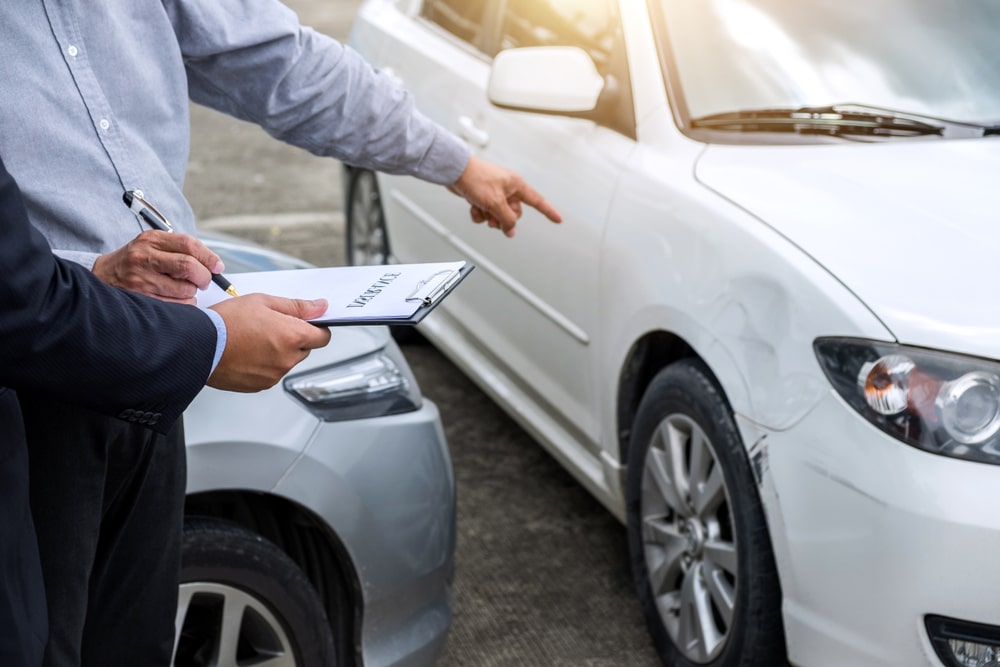Who Pays For Car Damage In A No-fault State?
 Who Pays For Car Damage In A No-fault State
Who Pays For Car Damage In A No-fault State No Fault, Who Pays?
If you're involved in a car accident in a no fault state, it can be quite confusing to figure out who's responsible for the damage to your vehicle. Most people understand that in a no fault state, any injury caused by the accident should be covered by your own insurance policy. But what happens when it's just damage to your car? We'll explain all about no fault state laws, and who pays for car damage in a no fault state.
What is a No Fault State
A no fault state is one in which your auto insurance policy will pay for any losses or damages resulting from a car accident, regardless of who is at fault. It's designed to make insurance claims faster and easier, especially in minor or low-impact accidents. Because your own insurance policy covers the damages and injuries, it reduces the time spent figuring out who's responsible for an accident.
In no fault states, the amount of compensation that can be collected is limited, however. This is to keep insurance costs down for everyone in the state. If you live in a no fault state, then you must have Personal Injury Protection (PIP) insurance. Without it, you cannot benefit from no fault laws.
Who Pays for Car Damage in a No Fault State
In general, the answer is simple: your insurance policy pays. As a no fault state, your insurance policy will cover the costs to repair your vehicle, up to a certain limit. This includes the cost of medical care and treatment (including prescription drugs) for any injury sustained in a car accident. Note that this coverage is for you and your passengers; it does not cover the other person's vehicle or property.
In some cases, if the damage is severe enough, you may be able to make a claim against the other person's insurance policy. This is known as an "excess claim," and it only applies if the other person was found to be responsible for the accident. In a no fault state, however, this is uncommon – your own insurance policy will pay for the damages regardless of who's at fault.
How Do I Make a Claim?
If you need to make a claim for car damage in a no fault state, the first step is to contact your insurance company. Tell them the details of the accident, and they will tell you what to do next. Usually, they'll complete an accident report and ask for receipts or bills related to the accident. They'll also need to inspect the damage to your car. Keep in mind that there may be a limit to what your insurance will cover, so check with them beforehand.
In some cases, you may need to file a lawsuit against the other driver to get the compensation you deserve. If so, make sure to consult with a personal injury attorney to figure out your options. A lawyer can help you determine the exact amount of compensation you should be entitled to, and can provide legal advice on how best to proceed.
No Fault vs. Liability
It's important to note that no fault states are very different from liability states. In a liability state, the person who caused the accident is responsible for paying for the damages. The other person can file a claim against the other driver's insurance to recoup costs. However, in a no fault state, your own insurance policy covers the costs regardless of who the other person was.
The main advantage of no fault states is that you don't have to waste time and money trying to determine who was at fault for the accident. Your own insurance policy pays for your losses, regardless of the other person's fault. However, the downside is that you may not be able to collect as much money as you could in a liability state.
No Fault Laws and Insurance Rates
No fault states usually have lower auto insurance rates than liability states, for several reasons. First, there's no need for the insurance companies to spend time and resources tracking down the other driver's insurance and figuring out who was at fault for the accident. Second, the cost of car repairs is spread across all drivers in the state, not just the driver who caused the accident. And third, since the cost of insurance claims in no fault states is usually much lower than in liability states, the insurance companies can offer lower rates.
It's important to note that no fault laws vary from state to state. Some states don't allow personal injury claims, while others impose limits on how much can be claimed. Before signing up for auto insurance in a no fault state, make sure to read the policy carefully and know what it covers.
Conclusion
If you're involved in a car accident in a no fault state, the amount of compensation you can receive is usually limited. Your own auto insurance policy will typically cover the cost of repairs and medical treatments, but only up to a certain limit. In most cases, you won't be able to make a claim against the other person's insurance policy unless the other person was found to be responsible for the accident. Insurance rates in no fault states are usually lower than in liability states, as the cost of insurance claims is usually lower.
No matter what type of state you live in, it's always important to understand your exact auto insurance policy and what it covers. Make sure you take the time to read through your policy so that you know exactly what you're covered for – and who pays for car damage in a no fault state.
Post a Comment for "Who Pays For Car Damage In A No-fault State?"